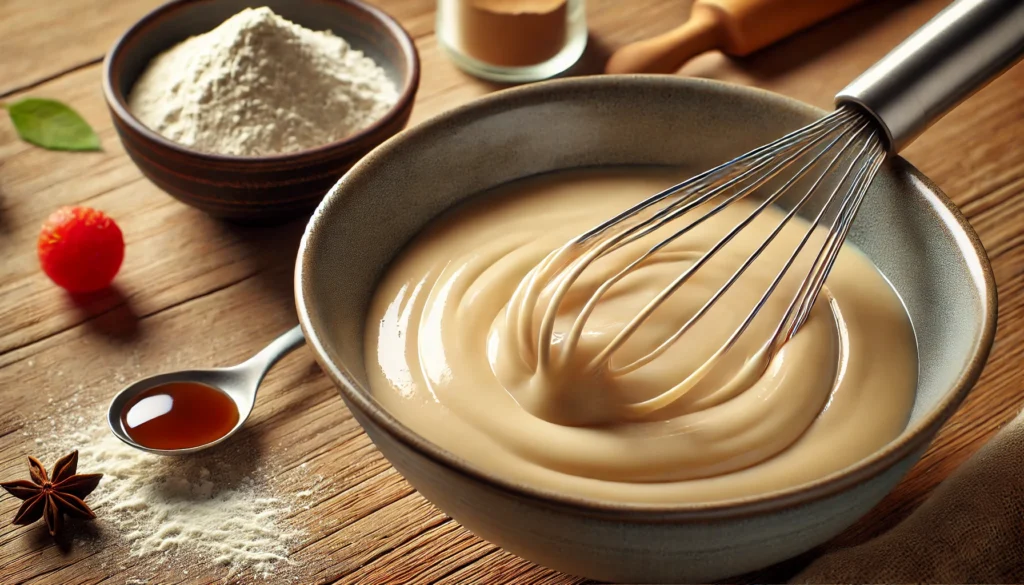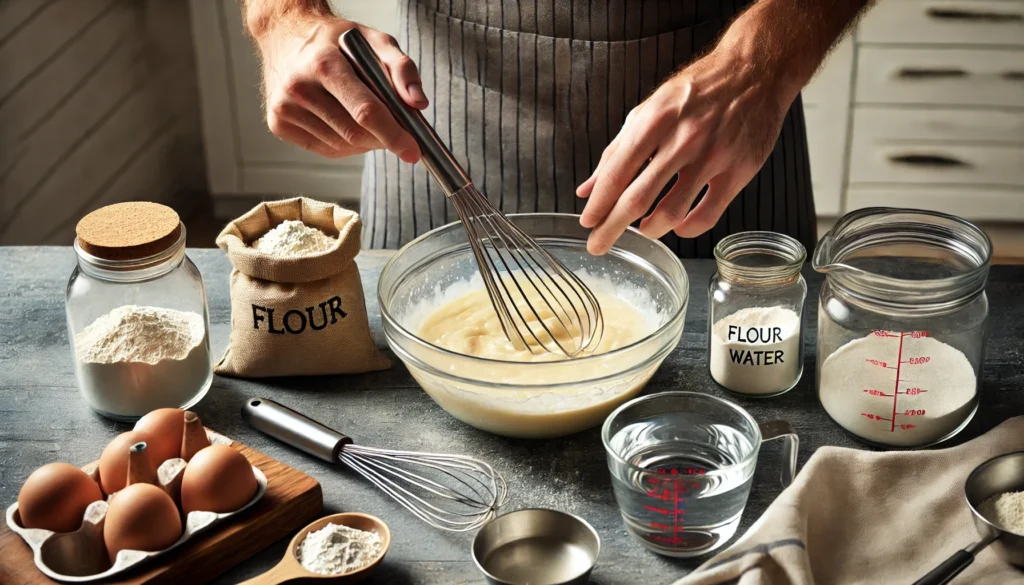When preparing delicious gravy, many cooks wonder, what is it called when you mix flour and water for gravy? This mixture, known as a “slurry,” is a simple yet effective method for thickening gravies and sauces. Understanding how to make and use a slurry can elevate your cooking, ensuring your gravy has the perfect texture.

A slurry is particularly useful for those who want to create velvety, lump-free gravy. By blending flour and water, you create a thickening agent that, when heated, integrates smoothly into your dish. For more detailed instructions on how to achieve the perfect consistency, check out this guide on making gravy taste better.
Additionally, knowing the science behind the slurry is important. When flour is combined with water, the starches swell and absorb liquid, creating a thickening effect as it heats. This process differs from a roux, which involves cooking flour and fat together before adding any liquid. To explore further, read about what makes gravy smooth and tasty.
How a Slurry Works in Gravy Making
To answer “what is it called when you mix flour and water for gravy,” we need to understand how a slurry works. A slurry, made by mixing flour with cold water until smooth, is used to thicken gravies and sauces. The key to using a slurry effectively is to ensure the mixture is well-combined before adding it to the hot liquid. The flour particles expand as the slurry heats, thickening the gravy without forming lumps.
- Chemical Reactions in Thickening: As you heat the slurry, the starch granules in the flour absorb water and swell, causing the gravy to thicken. This process, known as gelatinization, helps to achieve a smooth texture that enhances the overall quality of the dish.
Choosing the Right Flour for Gravy
Not all flours are created equal when it comes to making a slurry for gravy. The type of flour you use can affect the texture and flavor of the final product.
- All-Purpose Flour: This is the most common choice for making a slurry. It has the right amount of starch to thicken the gravy while providing a neutral flavor.
- Alternative Flours for Slurry: Whole wheat flour can give your gravy a more robust flavor, while gluten-free flours like rice flour or cornstarch offer a different texture and are suitable for those with dietary restrictions.
For more insight on selecting the right ingredients and maximizing flavor, refer to the guide on how to make chicken gravy taste better.
Step-by-Step Guide to Making a Slurry for Gravy

To make a slurry for your gravy:
- Measure the Flour and Water: Use a 1:2 ratio of flour to water. For example, mix 1 tablespoon of flour with 2 tablespoons of cold water.
- Whisk Until Smooth: Combine the flour and water in a small bowl. Whisk thoroughly to ensure there are no lumps.
- Incorporate into Hot Liquid: Slowly add the slurry to your simmering broth or drippings, whisking constantly to prevent clumping.
- Cook Until Thickened: Continue to stir until the gravy reaches your desired consistency.
Avoid over or under-mixing the slurry, as this can lead to a lumpy or thin gravy. If lumps do form, strain the gravy through a fine mesh sieve to remove them. For more tips on creating lump-free sauces, check out this guide on gravy-making techniques.
Adjusting the Consistency of Your Gravy
If your gravy turns out too thick or too thin, there are simple adjustments you can make:
- Thinning the Gravy: If the gravy is too thick, gradually whisk in more broth or water until you reach the desired consistency.
- Thickening the Gravy: If the gravy is too thin, make another small batch of slurry and add it gradually, stirring constantly until thickened.
Variations in Gravy-Making Techniques
Understanding the different methods for thickening gravy, including using a slurry or a roux, can help you choose the right technique for your dish.
- Roux vs. Slurry: A roux is a mixture of flour and fat, typically butter, cooked together before adding liquid. This method imparts a rich flavor and a creamy texture. In contrast, a slurry is quicker and easier, made by mixing flour and water without cooking beforehand.
- Using Cornstarch or Arrowroot: These alternatives to flour provide a glossy finish to the gravy and are ideal for those seeking a gluten-free option. However, they should be used in smaller quantities to avoid a gelatinous texture.
Cultural Variations in Gravy Recipes
Gravy recipes can vary significantly across different cultures and cuisines, each bringing its unique twist to the dish.
- Southern-Style Gravy: Often made with a roux of flour and pan drippings, Southern gravy is a staple in comfort foods like biscuits and gravy.
- French Sauces: In French cuisine, a roux is commonly used to create sauces like béchamel or velouté, which are then served with meats or vegetables.
For a detailed look into different types of gravies and their unique ingredients, see our article on what is chicken gravy made of.
FAQs About Mixing Flour and Water for Gravy
- What is a slurry and how is it different from a roux?
A slurry is a mixture of flour and water, while a roux is made with flour and fat cooked together. Both are used to thicken sauces but differ in preparation and flavor. - Can you make gravy without flour?
Yes, cornstarch or arrowroot can be used as a thickener instead of flour, particularly for those looking for gluten-free options. - What is the best ratio of flour to water for a slurry?
A common ratio is 1 tablespoon of flour to 2 tablespoons of water, which creates a smooth consistency without being too thick. - How do you fix lumpy gravy?
If your gravy becomes lumpy, strain it through a fine mesh sieve or use an immersion blender to smooth it out. - Can cornstarch be used instead of flour in a slurry?
Yes, cornstarch is a great alternative to flour and can provide a clearer, more glossy finish to your gravy.
Tips for Perfecting Your Gravy
Here are some pro tips to ensure your gravy turns out perfect every time:
- Whisk Continuously: To prevent lumps, whisk the slurry into the hot liquid steadily.
- Simmer, Don’t Boil: Boiling can cause the gravy to separate or become too thick. Keep it at a gentle simmer.
- Season Gradually: Add salt and pepper slowly, tasting as you go to avoid over-seasoning.
Health Considerations and Alternatives
For those looking to make a healthier gravy, consider the following:
- Lower Calorie Options: Use less butter or a light oil in place of fat when making a roux.
- Gluten-Free Gravy: Substitute all-purpose flour with cornstarch or a gluten-free flour blend for a gluten-free gravy option.
Conclusion
Now you know what it is called when you mix flour and water for gravy—a simple “slurry” that can be easily mastered. Whether you’re making a classic Thanksgiving gravy or a quick sauce to accompany a weeknight meal, understanding this fundamental cooking technique will help you create delicious, lump-free gravy every time. Experiment with different flours, ratios, and techniques to find what works best for your culinary needs.
By following these tips and understanding the basics of slurry-making, you can enhance your cooking repertoire and impress your guests with perfectly thickened, flavorful gravy.
